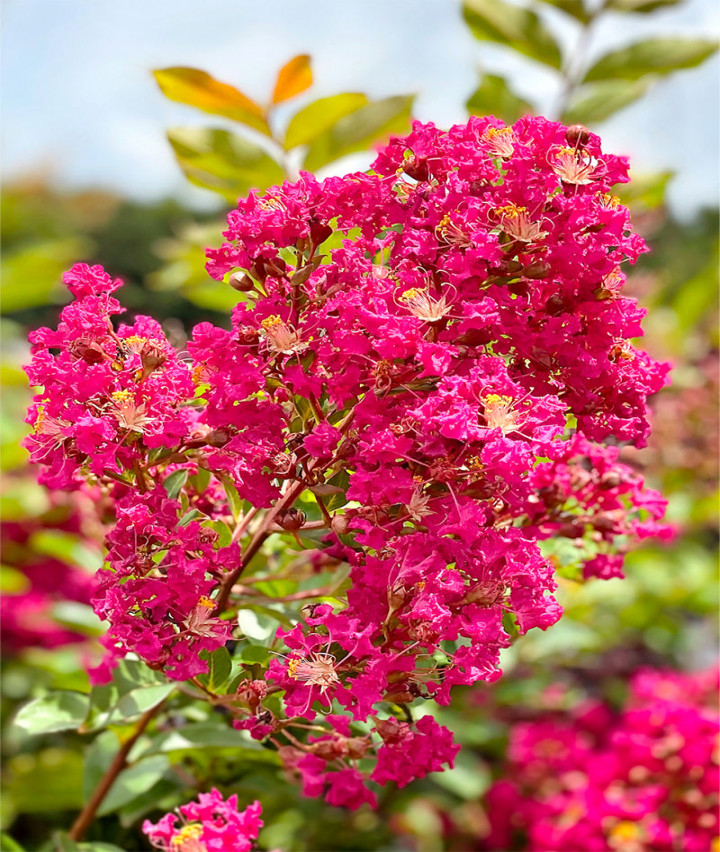Everything You Need to Know About Crepe Myrtle Plants
What do you mean by Crepe Myrtle plants?
Crepe Myrtle plants, also known as Lagerstroemia, are beautiful flowering plants that are popular for their vibrant blooms and attractive bark. These plants are native to Asia and Australia and are commonly found in gardens and landscapes around the world. Crepe Myrtles come in a variety of colors, including pink, white, purple, and red, making them a versatile and stunning addition to any garden.
How to care for Crepe Myrtle plants?

Caring for Crepe Myrtle plants is relatively easy, as they are low-maintenance and drought-tolerant once established. These plants prefer full sun and well-drained soil, so be sure to plant them in a sunny spot with good drainage. Water your Crepe Myrtle regularly, especially during hot and dry periods, and fertilize them in the spring to promote healthy growth and abundant blooms.
What is known about Crepe Myrtle plants?
Crepe Myrtle plants are known for their long blooming season, which typically lasts from late spring to early fall. These plants produce clusters of crepe-like flowers that are highly attractive to bees, butterflies, and other pollinators. Crepe Myrtles are also prized for their striking bark, which peels away to reveal a smooth, mottled surface in shades of gray, brown, and orange.
How to solve common issues with Crepe Myrtle plants?
One common issue that Crepe Myrtle plants may face is powdery mildew, a fungal disease that can cause a white powdery coating to appear on the leaves. To prevent powdery mildew, be sure to water your plants at the base and avoid wetting the foliage. If powdery mildew does occur, you can treat it with a fungicide or simply remove and dispose of the affected leaves. Another common issue is aphids, small insects that can suck the sap from the leaves and stems of Crepe Myrtles. To control aphids, you can spray your plants with a strong stream of water or use insecticidal soap.
Information about Crepe Myrtle plants
Crepe Myrtle plants are versatile and can be grown as shrubs or small trees, depending on the variety. These plants are ideal for adding color and interest to gardens, borders, and containers. Crepe Myrtles are also popular for their fast growth rate, with some varieties growing up to three feet per year. In addition to their beauty, Crepe Myrtle plants are also valued for their drought tolerance and pest resistance, making them a great choice for low-maintenance landscapes.
Conclusion
In conclusion, Crepe Myrtle plants are a beautiful and versatile addition to any garden. With their vibrant blooms, attractive bark, and easy-care nature, these plants are sure to brighten up your outdoor space. By following the tips outlined in this article, you can enjoy healthy and thriving Crepe Myrtle plants for years to come.
FAQs
1. How often should I water my Crepe Myrtle plants?
Crepe Myrtle plants should be watered regularly, especially during hot and dry periods. Be sure to water at the base of the plant and avoid wetting the foliage to prevent issues such as powdery mildew.
2. How can I prevent pests like aphids on my Crepe Myrtle plants?
You can prevent pests like aphids by spraying your plants with a strong stream of water or using insecticidal soap. Regularly inspect your plants for signs of pests and treat them promptly to prevent infestations.
3. When is the best time to fertilize Crepe Myrtle plants?
The best time to fertilize Crepe Myrtle plants is in the spring, before the growing season begins. Use a balanced fertilizer to promote healthy growth and abundant blooms.
4. Can I prune my Crepe Myrtle plants?
Yes, you can prune Crepe Myrtle plants to control their size and shape, as well as to promote new growth and blooming. Prune in the late winter or early spring before new growth emerges for best results.
5. Are Crepe Myrtle plants toxic to pets?
Crepe Myrtle plants are not considered toxic to pets, but it is always a good idea to keep an eye on your furry friends and prevent them from ingesting any plant material. If you have concerns about your pets and plants, consult with a veterinarian for more information.
